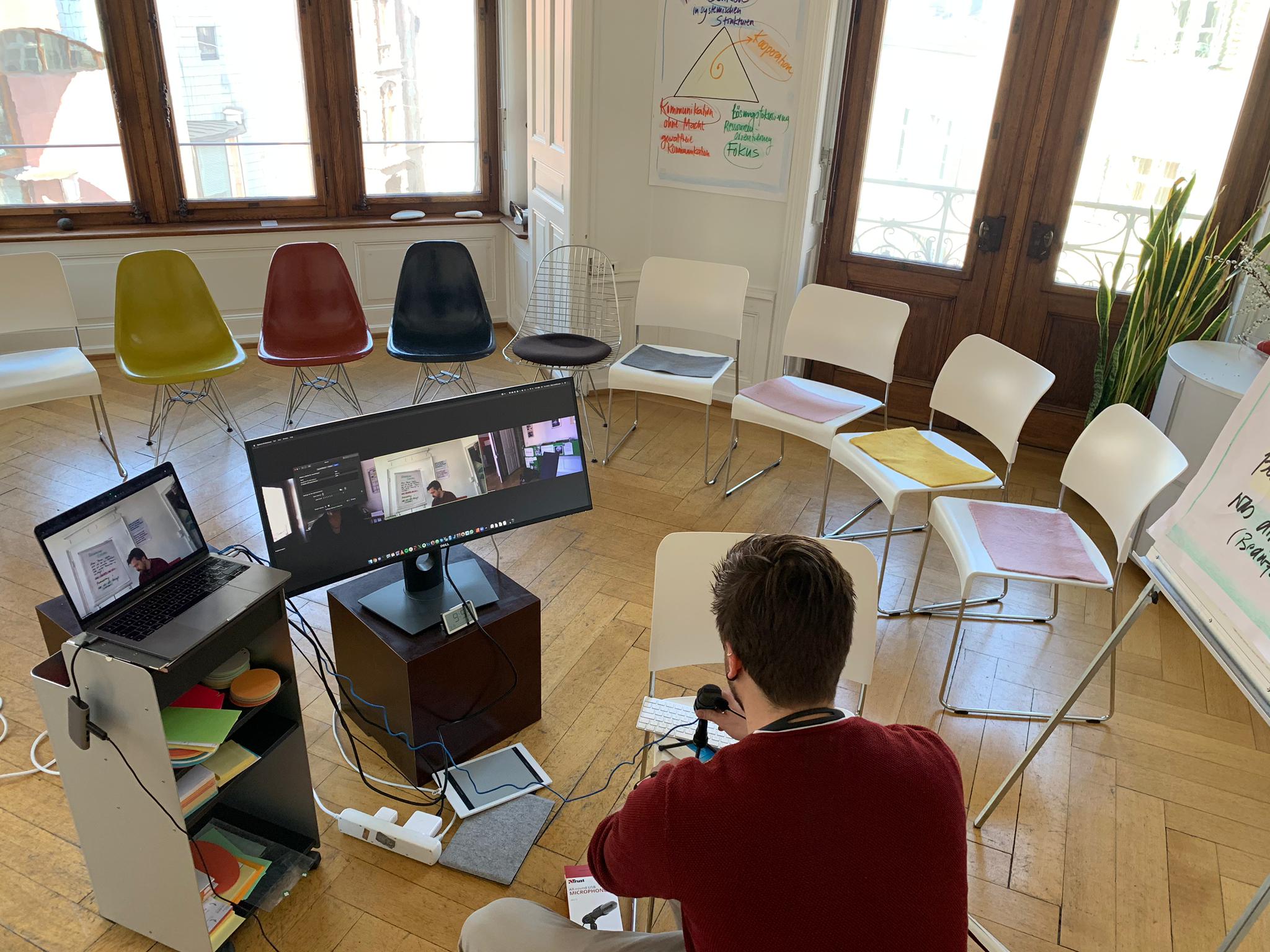Blog 11. August 2020
13 tips for online communication with groups
For moderators and speakers of online group events
During the Corona Lockdown period we have had a lot of experience with online group events with 6 to 40 participants: team coaching, workshops, seminars, training modules, university lectures, presentations, large group events, interactive lecture performance, etc. We have experimented a lot and collected everything that works better and makes online collaboration, online learning and online life easier and more enjoyable for us and the participants. Here we give a selection, so to speak Best of the Best of Users Digest:

- Sit down in such a way that when you have the screen in front of you, you are looking towards an open room and not at a wall. You will notice that there is more feeling of human connectedness.
- Place a circle of chairs in the room and pretend that the group is present. The simulation makes you feel as if you are sitting in a circle of people. This feeling is transferred to the participants.
- Set up a kind of cockpit with a large screen for the plenary and a laptop with a camera underneath. On the laptop you can see the speaker or the presentation. It is helpful if the laptop is placed on a wheelchair independent of the large screen. You can move it closer to you or focus the camera on something, e.g. a whiteboard or flipchart where you can write or draw something. Behind you you can place a pinboard with suitable quotations or pictures. The result is a vivid staging. The attention of the participants is strengthened.
- Even if the technique works, something can always go wrong. If it happens, talk about it. Ask the participants for help. Take breakdowns as normal. Humor makes everything easier. Breakdowns are resources. They can be used to activate participants' responsibility. The event becomes more lively and spontaneous.
- Be there first so that you are already there when the first participants arrive. You will be perceived as a host and feel like: Welcoming!
- Greet each coming person by name and give them a compliment (a real one! Something you really like about the person.) Adress a person first in her resources, is the principle of solution-focusing; keep critical thoughts to yourself and let them evaporate. A positive relationship with each person is established very quickly. The others are interested and listen. The mood brightens. Connectedness and trust develops.
- Amplify your facial expressions and body language: nod, move your eyebrows, smile, ... Your body language signals become clearer and more perceptible. The participants go into more intensive contact with you.
- When you are speaking or a participant is speaking and you are listening, look into the camera above the screen and not at the monitor. The participants experience eye contact with you. This strengthens the contact, the connection and the attention.
- When you ask a question in the round, often no one gives an answer. It is different when you look at the faces of the participants. Look for signs that a thought has been created. If you see such signs, address the person by name and say something like: "I see that a thought is perhaps developing in you (name). Would you like to share it with us?" Make sure that you always address someone else and that everyone gets a chance to speak. In online mode, participants often do not speak without an invitation. If you talk to them carefully, you make it easier for them to say something. If someone doesn't respond, nod and go to the next person. Participants experience voluntariness and become more active. A mood of appreciation and goodwill develops.
- Presentations and inputs should not take longer than 15 minutes. If you speak for longer, pause and do a physical exercise with the participants, e.g. with hands visible to all. This will keep you within the natural attention span of most people. With an intermittent physical exercise you can reset your attention.
- Speak freely! When you read something, keep looking into the camera and address the plenum. The contact intensifies and the attention of the participants stays with you.
- Alternate between input and breakout group dialogues. Form small groups, randomly or selectively. Give the groups a question or a task and time for a group dialogue. Then do a sharing in the plenum. Tip #9: In small groups, participants can be more active and share their own perspectives. This makes the event more exciting and interesting. The people get to know each other better and the solidarity increases. In addition, insights are created that can be shared in the plenum.